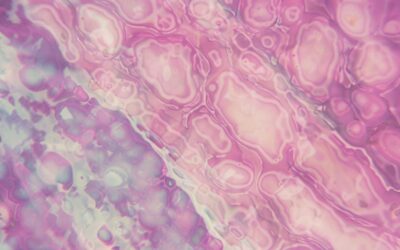Key Points:
- The microbiome is the world of microbiota (bacteria and so on) that live inside you
- Microbiota evolved with us and we need each other to survive and perform day to day functions
- Dysbiosis is where microbiota populations can get out of control. This can disrupt the ecosystem and have negative effects on the body
The human microbiome is a world of tiny organisms which live inside you called microbiota.
Microbiota is a collective term for these microorganisms which include bacteria, archaea, eukaryotes, fungi and viruses.
Your body is a series of landscapes or habitats where these microbiota can thrive.
Your skin, your mouth, your eyes, your nose, almost anywhere you can think of.
Our best guess is that over 50% of the cells in your body are made up of these microbial or ‘non human’ cells.
That’s around 39 TRILLION microbiota.
These microbial cells are tiny, roughly 1,000 times smaller than human cells.
That why you can’t we see them with the human eye and why they don’t weigh much.
If you were to bundle them together they’d comprise of less than 2% of our total body mass, or around 1.5kg in total. Similar, in weight, to the brain.
But they play an enormous role and impact virtually every aspect of our lives.
Without them none of us would survive for very long.
There’s no such thing as ‘good’ or ‘bad’ bacteria
First let’s bust a popular myth.
The common narrative fuelled by advertising companies is that microbiota (especially bacteria) are either ‘good’ or ‘bad’.
They brag of cleaning products that kill 99.9% of “germs” dead… while probiotic manufacturers tell us to fill our bodies with “friendly bacteria”.
But it’s best not to think of it in terms of “us and them”.
Microbiota are part of the interconnected whole. In the same way trees rely on vast mycelium networks underground to share nutrients and deliver messages we too rely on our microbiota as much as they do on us.
While we don’t want dangerous pathogens living on our kitchen surfaces and that we do want certain microbiota in our gut… it’s not black and white.
The first thing to do is define the relationship between microbial cells and human cells.
Microbiota and humans evolved together
Let’s
But first let’s explain what they are.
Microbiota is an umbrella term to describe everything
However by far the highest concentration live in your gut.
Symbiosis is key
Microbiota existed long before we ever came onto the scene.
They have around 3.5 billion years on us (humans have only been around a paltry 300,000 years).
They’ve evolved to an exist in every conceivable environment… rocks, mycelium networks, guts of dinosaurs, simple organisms, complex organisms and of course mammals like us.
But we are not separate entities in the sense of being in competition with us. They are a part of us.
They are an essential part of our ecosystem in the same way a blade of grass, a grazing animal and a carnivorous predator are part of a woodland ecosystem.
The idea that microbiota are just parasites or irritants. Creatures that exist outside of try and hitch a ride or exploit their hosts is a huge misunderstanding.
We are their hosts just as much as they are our hosts
They can’t live without us and we can’t live without them.
Many microbiota evolved long before us and were part – and are still part – of our own evolution and our day to day existence.
As we evolved from less complex organisms to larger one so they too have shaped our evolution and our makeup.
The key term here is symbiosis.
We have all seen the nature programs where the little bird is pecking insects off of the apex predator. The hippo or the lion is totally relaxed and it’s an arresting image.
The animal we associate with violence and gnashing teeth calmly allows the smaller animal to dance around so close to its deathly jaws.
We’re told this scenario plays out because it’s a mutual back scratching event.
The little bird gets sustenance from the ticks and insects. The Iion or hippo gets relief from the little critters (which they can’t physically remove themselves).
This is a crude painting of how symbiosis can work in an ecosystem, in this case the planes of sub-Saharan Africa.
But there are more detailed examples of symbiosis, of different species working together.
Great mycorrhizal networks connect forests full of trees.
Mycelium (funghi) tendrils spread over the roots of the trees. The tree feeds the mycelium with sugar and in return the mycelium processes it and feeds the tree with nitrogen and other essential minerals.
But this network does so much more.
It connect vast areas together in what some have dubbed the wood wide web.
Signals pass through these fibre optic like tendrils and warn trees when part of their family is under attack or lacking nutrients.
As a result, action can be taken and supply routes can change. A giraffe is is mercilessly stripping a tree of its leaves for lunch. The mycelium network helps send a message to other trees nearby trees which the giraffe and other giraffes may approach next and the tree can release chemicals in the leaves which are apparent to the giraffe.
This symbiotic relationship protects The food source for the mycelium network (The glucose that the trees provide through photosynthesis) and It protects the trees themselves from destruction.
This is where evolution has found a careful balance in this particular ecosystem that serves both parties.
So how does it work in humans?
Many of these little organisms
Microbiota have their own genetic structures and play different roles within our bodies.



0 Comments